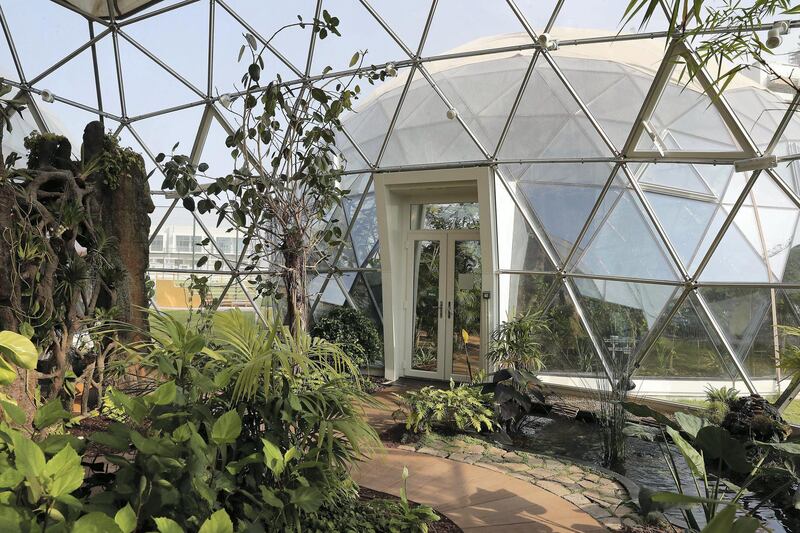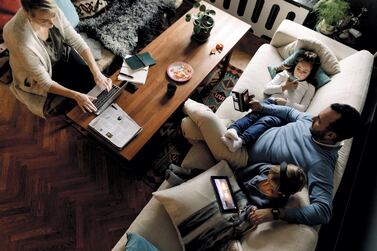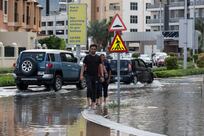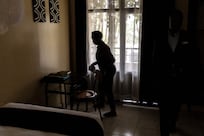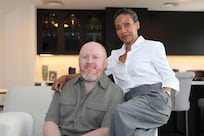For many, the apocalyptic scenes of bushfires in Australia that flood our screens may seem far removed from our daily lives here in the UAE. And yet, it's widely believed that every single event, every environment, every belief on this planet is in some way interlinked. It is this general understanding of the world – how everything is a process and a system, and that every system is nested in a greater system, all linked together – that is one of three essential pillars that make up the ethos behind The Arbor School in Dubai.
Dr Saad Al Omari, an ecologist and the school's founder, describes this understanding as ecological literacy. It works hand in hand with his other two underlying principles: sustainability – "we're not just talking about recycling or solar panels," he explains, "but all the systems we understand, including social, political, economic, personal, ethical and moral sustainability" – and environmental justice – "how humans treat each other under the aegis of the environment".
Arbor, which is owned by Praxis Education, is a British-curriculum school that embeds these three core ideologies within the fabric of its educational approach. While teachers stick to the internationally accredited National Curriculum for England, they also incorporate real-world, project-based, place-based and experiential learning whenever and wherever they can. They do this on field trips around the country, in the building's standard classrooms, up in the science and food technology labs and, importantly, in any one of the six larger and smaller biodomes that are dotted around the school grounds.
“It can’t be a gimmick. It won’t be a gimmick,” says Principal Brett Girven, who is from New Zealand and has qualifications in educational leadership, zoology and environmental science. “I’ve not walked into a school like this before. Yes, you can say there is an ethical dilemma, that just by being here in the Middle East we’re not green, as immediately we have one of the world’s biggest footprints. But, for that educational value, we can get kids to understand that, reconcile it and figure out how they can have an impact on the system.”
The school, which was designed to international standards so it is as energy efficient as possible, opened its gates in Al Furjan for its first academic year in 2018. It will eventually be a through-school, but is currently open until Year 7, with plans to offer up to Year 13 within the coming years. While it has been relatively successful in its mission so far, there have been difficulties along the way. For Girven, the biggest challenges have been focusing on one thing at a time and managing the number of opportunities that come their way. "Countries coming for Expo keep saying they want to partner. A company will say: 'we do biofuels and we could reduce your emissions of the buses to zero.' That's great! So managing the number of projects we could take on is the hardest part."
For Dr Al Omari, a Kuwait-born, Cambridge-trained environmental scientist, the most important lesson he’s learnt over the past year is patience. “One of the biggest things for me is realising it will take time,” he admits. “I wanted everything to happen from day one, but it will mature.”
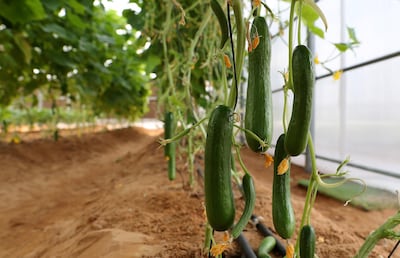
And mature it has. Alongside inviting Emirates Bio Farm to set up a commercial-scale vegetable farm in the garden, as well as welcoming artists-in-residence who work with the students on new creative projects each term, one of the latest projects the school has introduced is the makerspace. Run by British education consultancy Ethan&Co, the space, which is located in one of the three large biodomes, offers children a platform to work on technologically advanced projects that utilise 3D printing. When The National visited, children from Years 4 to 7 were busily working away on a series of prototypes for their "homes of the future". Two girls excitedly explained their visions, which incorporate everything from a space observatory to closets that choose your clothes and a submarine that cleans the ocean floor. In the corner, three boys had their heads down, concentrating on their new design for an iPad holder that can be easily used by a fellow classmate in a wheelchair. One of the Year 7 students, Sebastian, was also working on his own experiment that tests how truly biodegradable the polylactic acid they use to produce their 3D-printed prototypes really is.
Micheline Pollock, founder and chief executive of Ethan&Co, is in the makerspace every day. She explains how the basic 3D printers have now become so oversubscribed that some of the students have had to upskill themselves with Level 2 certification, so they can access the more advanced equipment. "I've attended prototyping workshops with other schools that are more established and with more students and you ask them what they're doing in terms of this kind of application and technology, and they go to the lab once a week. Even in universities, this type of equipment is locked away in rooms. Here, we want the students to use it and know what it is." Not only can pupils use the makerspace during school time and lunch breaks, they can also access the 3D printers remotely from home.
Pollock believes it's imperative to teach these kinds of skills to children when they're young. "The kids feel what they are designing is purposeful," she says. "They realise their ideas can be taken seriously; they can see the outcome and they can do more in-depth maths and use more technology. It's a complete innovation process." More importantly, they're unafraid to try new things. "In this space, when they come in, failure is a given. So we find there are no inhibitions. They come in, design, print, it's not what they wanted, so they go back to the drawing board, but no one's going to judge them for trying.
“The teachers are blown away, because they can’t keep up,” she adds with a laugh.
While the makerspace programme is voluntary, with more than a dozen students subscribed within the first six weeks, each class spends plenty of time throughout the week working in the dome. “Some children will be making, some ideating on whiteboards, others 3D printing,” Girven says. Various lessons, or at least parts of lessons – whether it’s science, design technology, computing, French or even Islamic studies – can be held across all of the biodomes when teachers think it relevant.
A walk through the three large biodomes is meant to represent a journey through nature. The first embodies “untouched nature”, featuring a tropical biosphere with about 145 species. “It’s inspirational in a quiet sense,” says Girven. “You go there to think, question, feel the textures, breathe and smell the air.” It’s home to climbers, creepers, waxy leaf and soft-leaf plants, and “each offer a teachable moment”, he adds.
Then we move on to the second space, which highlights humanity's interface with nature. There are fruit trees, herbs, animals and insects. "So the kids now interact with plants and animals, dig in the mud, plant the beans and make mud pies," he says. This then leads on to the third dome, the makerspace, which emphasises man's relationship with technology.
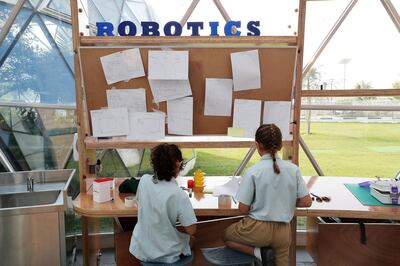
Dr Al Omari explains how research shows simply sitting in the classroom and teaching theory on a whiteboard is “not the most effective way to learn. It’s amazing how long it took us to realise that,” he says with a smile. “It took us an equally long time to realise that full-on, hands-on learning full-time is not the best way to go, either. So now people are beginning to understand it’s the middle ground where things work best, to combine these techniques depending on the subject matter.” The most powerful teaching tool is to capitalise on a child’s own experience, he adds.
“What we try to do is maximise this by creating experiences for the children. That’s what this is all about. They get massive doses of raw experience – in a tropical biosphere and growing their own crops, for example, then we take them into the classroom and try and dissect all that.”
As the students approach their GCSE tests, they spend more time in a classroom preparing for their examinations, “but the idea is that before we get to that level, the kids have been exposed during the primary phases to a wealth of experiences they can take with them, which makes them much more powerful learners”.
As environmental, social and even political concerns continue to heat up, the world could well depend on us all taking this kind of approach.
